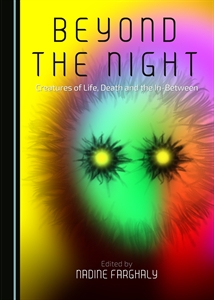Photo: Simone Broders (Meersburg, Altes
Schloss)
Vampire Fiction, Gothic Fiction, and the
Fantastic
"Bitten is the New Black": Vampire Chick Lit"No Sex Please, We're Vegetarians": Marketing the Vampire and Sexual Curiosity
"The Heartbeat of Outsiders": Vampiric Otherness as Female Empowerment
"Bitten is the New Black" [1]: Vampire Chick Lit
Published in: The Centennial Reader.
Full
text PDF-Version with
kind permission of Centennial
Reader
Abstract.
Women in a cultural context appear to be trapped
between different life-concepts and thus diverging
roles in society; even though feminists have struggled
for equal education and career opportunities, these
careers still have to be built during the mid-twenties
to early thirties, which is also the average time for
marriage and first children.
Simultaneously,
advertising and the media confront women with images
of youth and beauty they are supposed to attain by
using a certain product or undergoing a certain beauty
regime. Integrating all cultural and social
expectations into one life plan seems to require
superhuman strength – ironically, being a vampire
fulfills all requirements. A vampire is
extraordinarily beautiful without any efforts,
surgeries or beauty products – similar to the glossy
magazine covers of digitally enhanced celebrities; she
is faster and stronger than the average human; she has
offspring not by a nine-month pregnancy, but by simply
biting a mortal. Her mental abilities give her a
considerable amount of power, often mind-reading or
manipulating the human brain. Above all, she does not
age and will thus never run out of time to attain all
of her life plans;
In Charlaine Harris's bestselling Sookie Stackhouse series, 1100-year-old Sophie-Anne is the powerful vampire queen of Louisiana, but visually she remains a 15-year-old schoolgirl. The fascination of female audiences with the vampire theme may thus be regarded as a product of the time of crisis that traps women between the conservative and the contemporary.
Full
text PDF-Version with
kind permission of Centennial
Reader
"No Sex Please,
We're Vegetarians": Marketing the Vampire and Sexual
Curiosity in Twilight,
True Blood, and the Sookie Stackhouse Novels
Published in: Gothic
Transgressions. Extension and
Commercialisation of a Cultural Mode. Eds.
Ellen Redling and Christian Schneider. Kultur:
Forschung und Wissenschaft Bd. 19. Münster: LIT,
2015.
Details
Abstract. The sexual initiation
of the heroine by the vampire has always been both a
traditional plot device bridging the gap between
Gothic and romance, and a successful marketing
strategy. However, in Stephenie Meyer's best-selling
Twilight saga (2005), the "vegetarian"
vampire-turned-superhero does not only abstain from
human blood, but also from sexual relations.
Advertised with the Christian symbol of temptation,
the apple, on the cover, (sexual) curiosity is
associated with original sin.
Despite the series' commercial success, Meyer's
'celibate' vampires have been under attack for
promoting thinly disguised evangelical morals and
obsolete gender stereotypes. Charlaine Harris' Sookie
Stackhouse novels (2001) and the TV adaptation by
Alan Ball, True Blood (2008), set
themselves apart from Meyer's desexualized vampires:
Harris' vampires are highly sensual. Despite its
setting in the conservative 'bible belt' state of
Louisiana, the series' marketing strategy depends on
the link between vampirism and the heroine's sexual
awakening.
"The Heartbeat of Outsiders": Vampiric Otherness as Female Empowerment in P.C. and Kristin Cast's House of Night
Published
in:
"'The Heartbeat of Outsiders' -
Vampiric Otherness as Female Empowerment in P.C. and
Kristin Cast's House
of Night". Beyond the Night - Creatures of
Life, Death, and the in-Between. Ed. Nadine
Farghaly (Newcastle upon Tyne: Cambridge Scholars,
2015); 65-94.
Details,
Table of Contents, sample chapter


"'No Sex Please, We're Vegetarians' - Marketing the Vampire and Sexual Curiosity in Twilight, True Blood and the Sookie Stackhouse Novels". Gothic Transgressions. Extension and Commercialisation of a Cultural Mode. Eds. Ellen Redling and Christian Schneider. Kultur: Forschung und Wissenschaft Bd. 19. Münster: LIT, 2015.
Link zum Buch
"Satanisches Wissen? Neugier als Grenzüberschreitung in Science Fiction und Horror". Feststellungen. Dokumentation des 25. Film- und fernsehwissenschaftlichen Kolloquiums. Hgg. Thomas Nachreiner, Peter Podrez. Marburg: Schüren, 2014. 343-52. Link zum Buch
"'Bitten Is the New Black' – Images of Women in Canadian and US American Vampire Chick Lit". The Centennial Reader. Current Readings - Reading Currents. Ed. William Bunn. Mount Royal University, Canada. 2011 Summer Issue.
Full text PDF-Version with kind permission of Centennial Reader
Footnotes
[1] "Bitten is the new black" is the tagline of Canadian author Michelle Rowen's fourth Immortality Bites novel: Michelle Rowen, Stakes & Stilettos (New York and Boston: Warner, 2009).
[2] P.C. and Kristin Cast distinguish the spelling 'vampyre' - the term children of the night use in their series to talk about themselves - from 'vampire', the undead created by folklore and previous literature.
[3] House of Night draws heavily on Wicca, a pantheistic neo-pagan religion popularised by Gerald Gardner in the 1950s, in which Goddess and God are regarded as complementary polarities.
Contemporary Vampire Fiction
Michelle Rowen, The Immortality Bites Series and The Immortality Bites Mystery Series
http://www.michellerowen.com/books/
P.C. and Kristin Cast, The House of Night Series
http://www.houseofnightseries.com/
Yasmine Galenorn, The Sisters of the Moon Series / The Otherworld Series
Charlaine Harris, The Sookie Stackhouse Series / The Southern Vampire Mysterieshttp://www.galenorn.com/Otherworld/
http://charlaineharris.com/